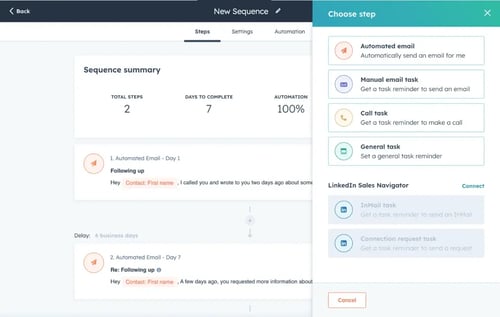From Silos to Scale: How to Build a Unified GTM Motion with HubSpot
Lead generation gets all the attention.
But if you’re struggling to grow, chances are alignment is the bigger issue.
In many go-to-market (GTM) teams, marketing, sales, and customer success operate in silos. Each team has its own tools, processes, and goals. The result? Broken handoffs, scattered data, duplicated efforts—and a customer experience that feels disconnected.
But it doesn’t have to be this way.
HubSpot gives companies the ability to unify their GTM motion under one platform. It’s not just about automation. It’s about creating a shared foundation that helps every team work better—together.

In this blog, we’ll break down how GTM silos form, what they cost you, and how to use HubSpot to align your revenue teams and scale smarter.
Why GTM Alignment Matters More Than Ever
When revenue teams are not strategically aligned, the challenges quickly become apparent:
- Marketing-driven leads do not progress to sales action
- Sales secures deals that customer success is not equipped to support
- Attribution models lack consistency and transparency
- Internal reporting is fragmented and misaligned across departments
In fact:
-
53% of companies experience broken handoffs between marketing and sales
-
84% of executives say data silos impact their organization’s performance
Alignment isn’t just a “nice to have.” It’s a multiplier. When GTM teams are aligned, growth becomes more predictable, collaboration becomes easier, and customer experience becomes smoother.
What Disconnected GTM Teams Actually Look Like
Here’s a quick snapshot of what misalignment looks like in practice:
| Problem | Impact |
|---|---|
| MQLs that Sales doesn’t trust or follow up | Slower pipeline generation |
| Deals closed without visibility for CS | Friction during onboarding |
| Scattered tools and unstructured handoffs | Poor reporting and missed opportunities |
| Multiple data sources, none of them aligned | Conflicting insights and wasted effort |
Even if each team is high-performing on its own, lack of integration and shared visibility can cause teams to work against each other.
HubSpot: More Than Just a Tool—A Unifying GTM Platform
HubSpot helps companies move from siloed teams to synchronized systems. Here’s how:
Shared CRM & Contact Timeline
Every team sees the full customer journey—from first touch to renewal. Marketing, sales, and CS all have access to the same contact record, so no one’s left guessing.
Unified Workflows & Automation
HubSpot automates lead routing, deal creation, onboarding tasks, internal alerts, and more. These automations ensure smooth transitions and eliminate reliance on spreadsheets or manual processes.
Centralized Reporting & Attribution
Use multi-touch attribution and customizable dashboards to give each team the KPIs they care about—without breaking the funnel view. Everyone works from the same source of truth.
How to Align GTM Teams in HubSpot: A Practical Guide
- Define Shared Lifecycle Stages
Make sure everyone understands what each stage means—from Lead to Customer and beyond. HubSpot’s default lifecycle stages are a great starting point, but customize them to reflect your process. - Align on Lead Qualification & Handoff Rules
Clearly define when a lead is sales-ready, what a closed-won deal looks like, and when CS takes over. Then operationalize it inside HubSpot. - Build Workflows Around the Lifecycle
Use automation to move contacts across teams—trigger deals, assign owners, and send alerts as contacts progress through the journey. - Track What Matters with Custom Properties
Capture key information about your ICP, sales triggers, onboarding milestones, and more. These fields power segmentation, prioritization, and personalization. - Create Shared Dashboards
Marketing, Sales, and CS should each have dashboards that reflect their goals—using shared data. This keeps everyone aligned on performance and progress. - Set Up Feedback Loops
Use comments, notes, and shared reports to continuously communicate across teams. Alignment isn’t a one-time setup—it’s an ongoing process.
HubSpot Features That Power Unified Execution
Here are some of the most impactful features for enabling GTM alignment:
- Smart Lists & Shared Segmentation - Dynamic lists based on lifecycle stages, behavior, or custom fields allow all teams to act on the same contact segments—at the right time.
- Sequences for Sales & Workflows for Ops - Sales teams can automate follow-ups using Sequences, while marketing and ops automate internal handoffs, emails, and task assignments with Workflows.

- Playbooks for Process Consistency - Create structured guides for sales discovery, CS onboarding, or objection handling. Keep everyone aligned without relying on tribal knowledge.
- Custom Reports & Attribution - Build dashboards that answer big-picture GTM questions—like what’s driving pipeline, where churn risk is highest, or how campaigns influence revenue.
- HubSpot + ChatGPT - Use HubSpot’s AI tools to summarize data, build reports, and generate insights faster—so your teams spend less time digging and more time acting.
Final Thoughts: When GTM Teams Align, Growth Follows
When marketing, sales, and customer success share the same systems, definitions, and goals—everything just works better:
-
Handoffs are seamless
-
Dashboards are consistent
-
Customers feel a smoother experience
HubSpot delivers more than just automation—it enables true operational alignment.
In today’s dynamic market, that level of synchronization is the strategic advantage your revenue teams need to thrive.
Need help aligning your GTM motion with HubSpot?
At Glare, we empower organizations to unify strategy, systems, and teams—transforming HubSpot into a foundation for measurable, scalable growth. Ready to accelerate your GTM alignment? Connect with us to unlock your next stage of success.
.png)



